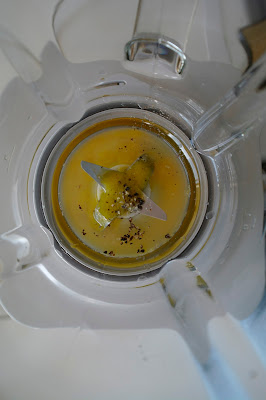As a follow up on my first post I'm going to share a traditional Indian recipe with you which contain our wonderful, green friends: peas. About seven years ago, a friend who was diagnosed with ... well, let's just say she can't eat wheat ... gave me this recipe, and it's so good that I haven't stopped making it since. It's called pudlas, a spicy Indian pancake that is traditionally gluten free and packed with nutrition, and also suitable for vegetarians. My husband and I enjoy many vegetarian dishes, but we are not vegetarians, therefore the recipe accompanying the pudlas is a non-vegetarian one. They can be eaten with vegetarian accompaniments or nothing at all - so read on if you are vegetarian. Pudlas are made with chickpea (chana) flour, which can be found in health shops, Dischem and some supermarkets. For example, the Spar in Seapoint (Cape Town) stocks it. I used Nature's Choice Chick Pea Flour.
These delectable, spicy pudlas are easy to make and can be enjoyed just like that, as a party snack with dips or the South African way - with a filling. If you want to have an authentic Indian meal, the best way to have them is just like that - hot - straight off the stove. Or when you have your favourite Indian, like butter chicken or biryani, swap the naan bread with these cheeky goodies. Another way to enjoy them is with Thakkali Thokku (Sun dried Tomato Spread). Here is an easy Thakkali Thokku recipe from Delectable Victuals. Alternatively, you can pick up some hummus, tzatsziki or red pepper cream cheese from the supermarket and simply dip them.
Today, however, I've given them a South African twist by serving it with a Tuna dish I created. It can be used either as a filling or a topping. If you want to use it as a filling, I suggest adding a touch more water to the pancake batter so that you have thinner pancakes that are easier to roll. I used the thicker batter and had to use a toothpick to keep it rolled up. Personally, I prefer the thicker version with the topping because I can have more of the delicious tuna which helps cool down the spicy pudlas.
Spicy pudlas with Michelle's cool yoghurt tuna
This is what you'll need:
Pancakes (makes approximately 7 / 8):
225 g chickpea flour (chana flour)
1 tsp cumin seeds, roasted (I'll show you how)
½ tsp turmeric
½ tsp ground sea salt
4 spring onions, chopped
110 g frozen peas, thawed
2 tbsp fresh coriander, chopped
300 ml water
Non-stick spray / vegetable oil for frying (you can also use ghee if you prefer)
Note:
Non-stick spray usually contains Soy Lecithin which is gluten-free, but some people with celiac disease can't tolerate soy products, so if you know that it applies to you rather use vegetable oil or ghee. If you're not sure, check with your doctor or nutritionist.
Michelle's cool yoghurt tuna:
1 carrot, peeled and finely chopped in a food processor or grated
1 spring onion, chopped
1 tbsp coriander, chopped
1 apple, peeled, cored and cubed
About ¼ English cucumber, cubed
1 tin of tuna (170 g), drained
3 tbsp Greek / plain yoghurt
1 tbsp mayonnaise
½ tsp ground cumin
Salt and pepper to taste
This is how you do it:
Step 1
For the pancake batter; place the cumin seeds in a non-stick frying pan (no oil required!). Roast them over medium-high heat, giving the pan a shake and a swirl occasionally, until the seeds darken in colour.
Step 2
Sift the flour in a large bowl. Add all the ingredients except the water and give it a mix.
Step 3
Add the water and mix well to make a batter - it is slightly thicker than normal South African pancake batter. Let the batter rest for an hour.
Step 4
About 30 minutes before the hour is up, make the tuna dish. Simply chop up the veggies and herbs, throw everything in a bowl and mix evenly. Set aside.
Step 5
After an hour, the pancake batter should be more aerated, note the bubbles in the photograph:
Coat a non-stick frying pan with non-stick spray or about one teaspoon (5 ml) vegetable oil, and place on a medium to high stove. Pour a third of a cup (80 ml) into the hot pan - swirl it around until the whole pan is coated. I find that a ladle works easiest - fill the ladle about half with batter, or use a smaller ladle the like the one in the first image. Turn it over when it looks like the picture on the right (no more runny batter), about 2 - 3 minutes.
After another 1 -2 minutes you can take it out of the pan and place it on a plate. Place a microwave lid or something similar over the pudlas - keeping them on the stove top (on a stove that is not being used), or place it covered in a warm drawer to keep it warm until you have made all the pancakes. Coat the pan with non-stick spray or vegetable oil for every pudla.
Step 6
Stack two on a plate, topped with the yoghurt tuna, or fill two pudlas with tuna and roll them up (use the thinner batter for this). Garnish with fresh coriander. Fresh coriander brings out all the flavour in the dish when you eat it together.
Tuck in and enjoy!























































